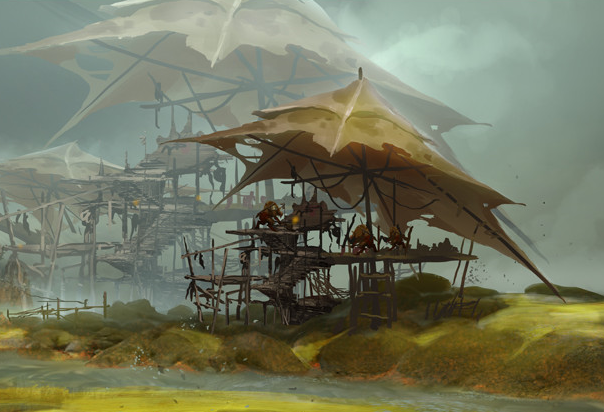Post Dark Age Goblinoid Camp Society
Following the end of the Darknesses grip on their minds, the goblinoids found themselves bound to feudalistic natures. Hunted by the armies of Bulvirk and the Coalition, the disparate species of goblin soon developed a camp system to survive and defend from attacks. Leadership is held by either Hobgoblins or Bugbears, as common goblins were too chaotic to make effective leaders.
Bugbear led tribes tended to be small in size, with a family of bugbears followed by two or three goblin families. They tend to be more secretive, preferring wooded lands to the open plains.
Hobgoblin led tribes tend to be larger, usually consisting of several Hobgoblin families with leadership usually falling to the most competent male (although there are exceptions). The tribe usually has a matching number of goblin families who are each attached to a hobgoblin family for protection. Sometimes there are one or two bugbear families in the largest of the tribes, although they tend to avoid falling under the leadership of the hobgoblins.
To support their large communities, Hobgoblin led tribes hunt on wolfback to keep up the carnivorous appetites of their people, ranging as far as 100 KM for food. If food is scarce, they may resort to raiding more civilized folk for food. As such they have been pushed to the peripheries of civilization, and tend to prefer moorland and plains.
Bugbear tribes require less and also tend to be more peaceful, although they will try to steal if the opportunity presents itself. There are actually more goblins per KM2 in a forest then on the plains.
Wealth is a loose concept in these communities. In the forest communities trade is more prevalent, although inter-community conflict is as well. The goblins value utility over beauty and put more value in tools over visible wealth such as jewelry. in the few communities that coexist with the civilized folk the concept of money is understood, but more so as the means to acquiring the things an individual may want or need. Smugglers often work on a barter system with these tribes, bringing iron and tools in trade for pelts and other commodities one can find in the uninhabited places of the land.
Traditions vary from tribe to tribe, with the role of solitary leader being the only norm. Many tribes also observe an informal hereditary system, with leadership to the most capable child of the former chieftain. Loyalty is also often given to the most practical leader. It is also fairly common for arguments to be resolved in the presence of the chieftain, so that he could attempt to mediate between all parties.
Remove these ads. Join the Worldbuilders Guild









Comments